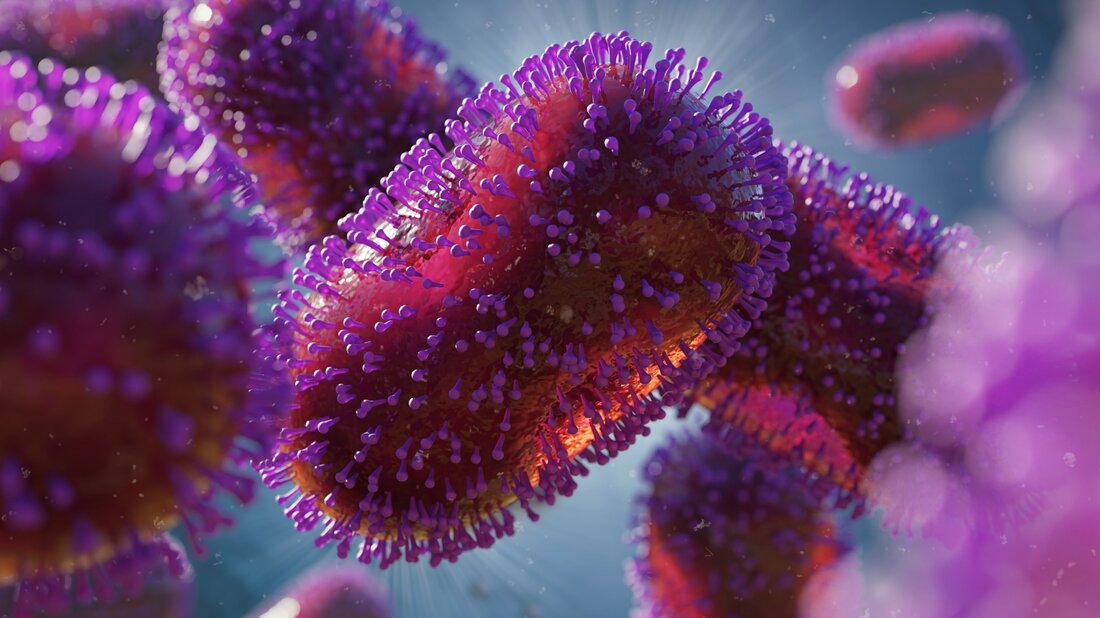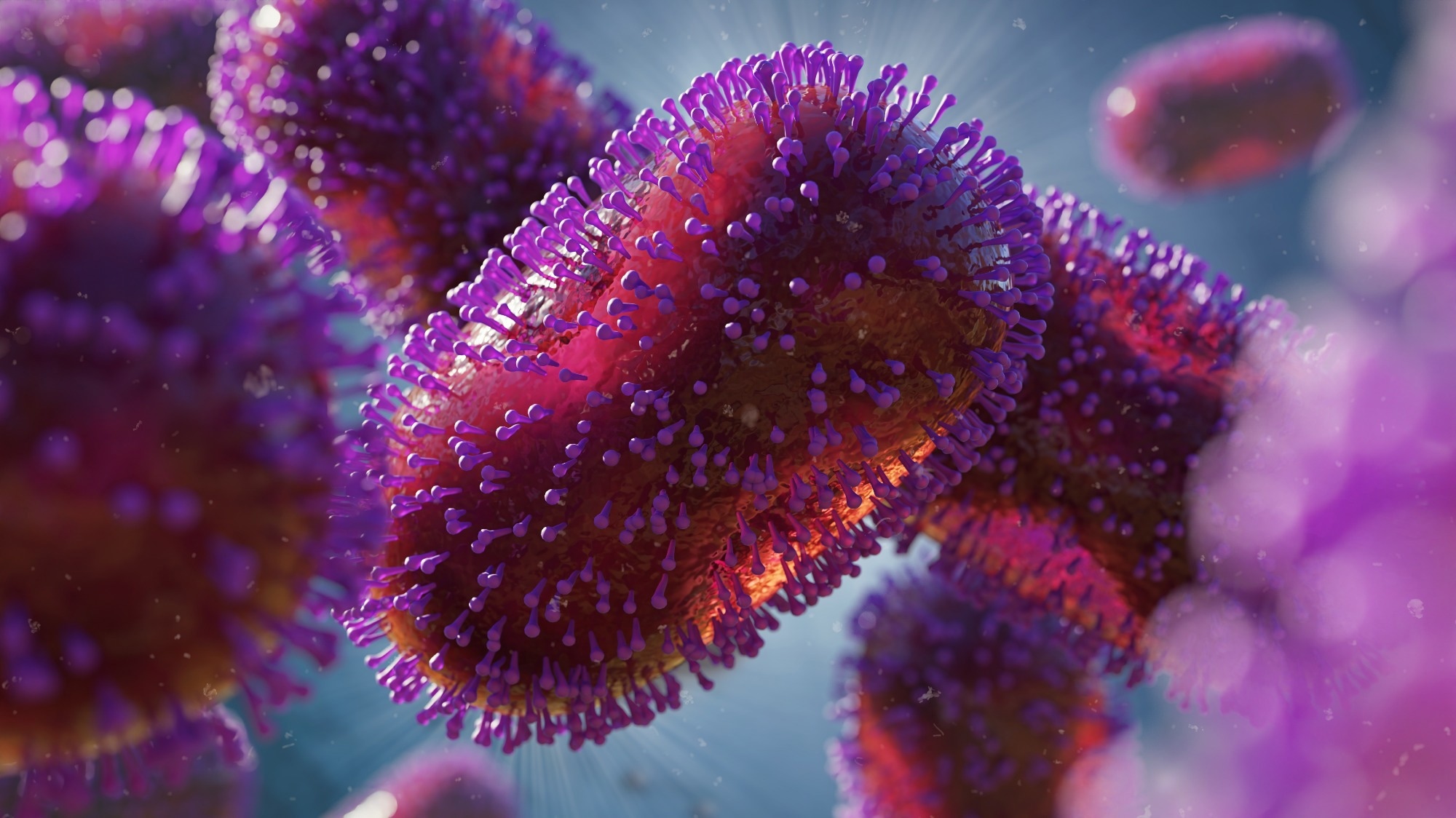Can monkeypox spread through contaminated food?
In a recent study published in the journal Microbial Risk Analysis, a team of researchers from France conducted a qualitative risk assessment to determine the likelihood of monkeypox transmission through food handling and consumption. Review: Risk of transmitting monkeypox virus (MPXV) through handling and consuming food. Photo credit: Spotted Yeti / Shutterstock Background Monkeypox is a zoonotic, systemic disease caused by the monkeypox virus, which belongs to the genus Orthopoxvirus of the family Poxviridae. The disease causes rashes and lesions on the palms, soles, and face, as well as on the mucous membranes of the mouth and anogenital region. …

Can monkeypox spread through contaminated food?
In a study recently published in the journal Microbial risk analysis A team of researchers from France conducted a qualitative risk assessment to determine the likelihood of monkeypox transmission through food handling and consumption.

background
Monkeypox is a zoonotic, systemic disease caused by the monkeypox virus, which belongs to the genus Orthopoxvirus of the family Poxviridae. The disease causes rashes and lesions on the palms, soles, and face, as well as on the mucous membranes of the mouth and anogenital region.
Until early 2022, the disease was endemic in West and Central Africa, but as of August 2022, monkeypox cases have been reported in nearly 96 countries outside the endemic region. According to the public health authority in France, 24% of cases in France were due to secondary contact with confirmed cases of monkeypox.
While disease outcomes are mild in most cases and resolve in two to three weeks, ocular lesions can cause complications such as eye damage and vision loss, and patients with comorbidities can experience damage to the pulmonary, digestive, and nervous systems. Additionally, because lesions are contagious until the skin has completely healed and droplets contaminated with fluid from the lesions can transmit the disease, it is important to investigate the likelihood of transmission through indirect environmental contamination such as food handling.
About studying
The present study used top-down and bottom-up approaches to assess the risk of transmission of monkeypox through contaminated food. The top-down approach examined the evidence available in the literature on foodborne transmission of monkeypox. Two systematic reviews and an additional literature search resulted in 19 publications that examined contaminated food as a possible transmission route for monkeypox.
The bottom-up assessment analyzed the steps required for a case of monkeypox to occur from food contaminated with monkeypox virus. The likelihood of foodborne transmission of monkeypox depended on a chain of events that began with contamination of the contaminated raw meat or diet by the handler. The food would need to contain viable monkeypox virus when it reaches the consumer, who would then need to be exposed to the viable virus orally or through contact for successful exposure. Additionally, foodborne transmission can only be confirmed if the consumer is subsequently infected and develops symptoms.
Results
The results of the top-down assessment found no evidence of transmission of monkeypox through food handling or consumption, but reported the possibility of monkeypox contamination in the meat of infected animals. However, the studies reviewed in the top-down approach did not support the possibility of monkeypox virus contamination in food sources other than bushmeat.
The bottom-up approach examined the potential for monkeypox contamination at every step of the process, leading from contamination of the food to infection of the consumer. The results suggest that given the strict regulations against bushmeat consumption and the associated long cooking times, the likelihood of monkeypox transmission through bushmeat is very low in France. In addition, there was no evidence of monkeypox infection in livestock, leading to the possibility of contamination of meat from infected animals being ruled out.
In contrast, the study reported that food contamination from an infected food handler is possible if the handler has lesions on their hands or practices poor hygiene and contaminates the food through oropharyngeal or nasopharyngeal secretions or feces or urine.
Although the study did not find evidence in the literature of monkeypox virus survival in food, data from studies of other Poxviridae viruses suggested that viruses can survive in various types of food even under refrigeration (at 4°C).
Food exposure assessment from studies with other Poxviridae viruses indicated that inadequate heat treatment or incomplete cooking of contaminated food, or reintroduction of the virus into cooked food by an infected handler, could expose the consumer to the virus through the cutaneous or oral route.
Cleaning and disinfection of utensils and premises using recommended concentrations and application times were found to be effective against monkeypox virus. The authors recommended using high heat (above 60°C) and UV disinfection methods to clean utensils and clothing that may have been used in food preparation and handling.
In addition, the study found no evidence of digestive tropism of monkeypox virus or infection through mucocutaneous contact with food. However, the authors believe that the possibility of oral transmission of monkeypox through food cannot be completely ruled out.
Conclusions
Overall, the results showed no significant association between monkeypox virus transmission and consumption of contaminated food. However, in situations involving individuals with confirmed monkeypox disease, good hygiene practices, isolation measures, appropriate cooking times, and effective heat treatments should be practiced.
Reference:
- Chaix, E., Boni, M., Guillier, L., Bertagnoli, S., Mailles, A., Collignon, C., Kooh, P., Ferraris, O., Martin-Latil, S., Manuguerra, J .-C., & Haddad, N. (2022). Risiko der Übertragung des Monkeypox-Virus (MPXV) durch den Umgang mit und den Verzehr von Lebensmitteln. Mikrobielle Risikoanalyse, 100237. https://doi.org/10.1016/j.mran.2022.100237, https://www.sciencedirect.com/science/article/pii/S2352352222000354
.

 Suche
Suche
 Mein Konto
Mein Konto
